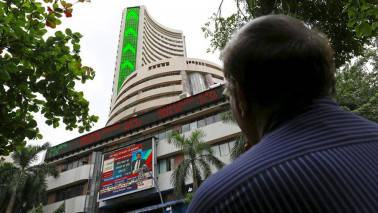Sameer Kalra - Equity Research Analyst & Founder of Target Investing, who has sell call on the stock, said there are two factors effecting the company in short term which will keep the downside risk high.
Zee Entertainment Enterprises shares plunged 19 percent intraday to hit fresh 52-week low of Rs 352.05 amid high volumes on Friday.
The stock was quoting at Rs 359.80, down Rs 74.30, or 17.12 percent on the BSE at 14:12 hours IST.
Other Essel group stocks - Essel Propack was down 15.70 percent at Rs 98.55, Zee Media Corporation down 5.35 percent at Rs 23 and Dish TV India fell 14.6 percent to Rs 28.70.
Sameer Kalra - Equity Research Analyst & Founder of Target Investing, who has sell call on the stock, said there are two factors effecting the company in short term which will keep the downside risk high.
One is regulatory changes in broadcasting as the customer gets to choose what to watch, he said, adding this will impact the viewership and subscription revenue in short to medium term . Which will impact the valuations. As advertising revenue is directly related to viewership.
The second risk he pointed is that promoter stake sale of 25 percent and above if offer is good enough. This is another downside risk element as it family influenced management. Which reduced the incentive for minority investor, he said.
On these factor and industry becoming more competitive due to regulatory changes, he added.
Meanwhile, after the announcement of stake sale proposal by the promoter, Japanese multinational conglomerate, Sony Corporation, has joined the race to pick up stake in Zee Entertainment Enterprises Ltd (ZEEL), said CNBC-TV18 quoting sources familiar with the matter.
Sony is said to be in talks with Zee's promoter Essel Group to buy a part stake or control in the company, sources told the channel, requesting anonymity.
In November last year, Essel has announced that the company will sell a part of its stake in Zee Entertainment to a global strategic investor.
Sony Corp has a large broadcast television presence in the country through Sony Entertainment Television (SET) India. The company has been strategising to beef up the broadcast TV business in India, according to an industry expert.
Currently, Zee is available through its television presence across 117 countries.
Sony was also in the race to acquire Twenty-First Century Fox's entertainment assets, which was eventually acquired by Disney for $71.3 billion.
Post-acquisition Disney will replace Fox as partners of Star India, which has a huge television presence in the country. After losing out to Star, Sony is trying to increase its presence in the Indian television space by acquiring Zee Entertainment.
American broadcaster Comcast is also in the fray and the company is exploring the deal, according to sources.
Chinese investors such as Tencent and Alibaba are also shown interest in the digital content platform of Zee Entertainment, ZEE5, said the sources, adding US giant Amazon may also enter in the race, especially for the OTT (over the top) platform of Zee.
The first round of bid is likely to happen in the next few days, a source added.
In a response to CNBC-TV18's query, Sony said, “We do not comment on speculation.”
The company’s discussions pertaining to the stake sale, with the prospective partners are ongoing and the progress is extremely positive, Zee spokesperson told CNBC-TV18.
"At this stage, we do not wish to comment on the name of the prospective partner. Once the deal is at an advanced and closure stage, we will certainly announce the relevant details. We would also like to request you to refrain from reporting any news based on market speculations or rumours, and to kindly wait for an official response or statement from ZEE Entertainment’s Corporate Communications team,” the company said.
ZEE Entertainment witnessed more than 500 percent rise in volumes and over 70 percent jump in the open interest (OI) from the previous trading session, data from MyF&O showed.
It is a classic case of short build up. If we look at the chart closely, there is a rise in open interest and volumes and a simultaneous decrease in price.
















